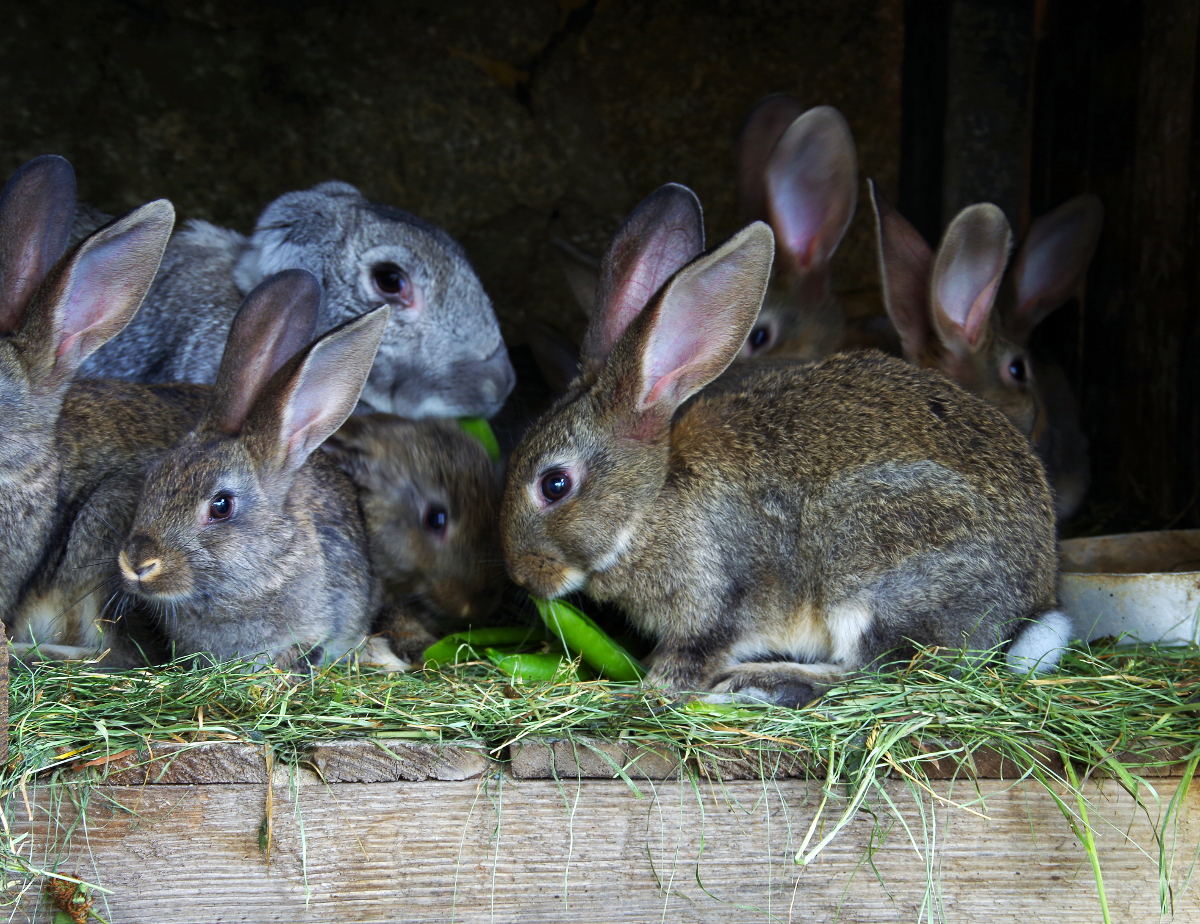Rabbit
Although rabbits have been hunted for thousands of years, they were only domesticated in the Middle Ages. Despite being bred on an industrial scale from the latter half of the 20th century, rabbits are reared mainly for occasional consumption, notably due to religious and cultural reasons. Similar to chicken meat, rabbit can be cooked in many different ways.
Farm-bred rabbits
© Shutterstock / Artistas
The slow domestication of rabbits
The origin of the common rabbit (Oryctolagus cuniculus) can be traced back to Spain. Its natural habitat encompasses Western Europe and part of the Mediterranean Basin, where it has been hunted for thousands of years. In the Middle Ages, rabbits were kept in warrens, stately game parks reserved for hunting. At this same time, monasteries began domesticating them. Several breeds appeared in the 16th century, proof of successful controlled breeding.
With a growing population in the 19th century, breeding rabbits intensified in rural areas and in the suburbs, mainly for direct consumption by the breeder. Selective reproduction increased the number of breeds of rabbits. Over the course of the same century, rabbits conquered new territories, notably Australia and New Zealand. As rabbits reproduce rapidly, they can become invasive in the wild and cause significant damage to crops. This is the case in Australia, where they have proliferated due to the lack of natural predators.
Although rabbits are found on most continents, their meat is not eaten everywhere. Religious and cultural reasons come into play, as is the case with Judaism, which forbids the consumption of rabbit meat. Likewise, where rabbits are kept as pets, eating rabbit meat can prove problematic.
Cuniculture
The traditional practice of breeding rabbits, known as cuniculture, is still practised today, either for their fur or mainly to provide food for the family and to sell any surplus. Rabbits have a basic diet, consisting of green fodder, cabbage, beetroot, hay or cereals. Intensive cuniculture developed in the latter half of the 20th century. Hutches were abandoned in favour of wire mesh cages, often in rows stacked on top of one another. These are placed inside buildings which are more or less closed, with artificial ventilation and lighting. The rabbits are given concentrate feed, in the form of pellets made of cereals.
Reproduction is currently carried out by artificial insemination, which proves more practical for the breeder. This way, the female rabbits, called does, all give birth almost at the same time and it is possible to balance the number of newborns. Nine to eleven kits are born with each litter and it takes 70 days for them to reach their slaughter weight.
Since the year 2000, world production of rabbit has increased. China is now the main producer, followed by the EU, where Italy, Spain and France produce the most meat. However, the consumption of rabbit meat remains relatively low compared to that of other types of meat: Although the French are reputedly keen on rabbit, they each only eat 1.3 kg of it per year, compared to 36 kg of pork.
In cooking
Since rabbit meat is white, it is often likened to chicken. Both can be cooked and seasoned in a variety of ways. However, rabbit meat can dry out during cooking, so it is often cooked in a sauce or wrapped in fat bacon (barded). It is also frequently used in pâtés and terrines.
A gastronomic speciality
The Romans brought wild rabbits from Spain to Italy. They hunted them and kept them in large parks, somewhat like game reserves. Like the Spanish, they ate the foetuses and newborn rabbits, called laurices. This culinary speciality continued through the Middle Ages, mostly eaten by monks during Lent as the Catholic church may have deemed rabbit foetuses to be of aquatic origin. The Gallo-Roman historian Gregory of Tours wrote that laurices were indeed a delicacy during Lent.



